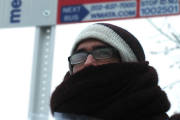Most financial advisors recommend new investors open their portfolios with a broad-based index fund or exchange-traded fund. An index fund or ETF could include a wide and balanced range of stocks in the Standard & Poor’s 500 index or ones tracking indices as though on cruise control and at minimal expense.
But as your portfolio grows, you’ll want a more sophisticated mix of funds that reflect your investing perspective. You’ll also want to introduce an additional ballast of solid but less basic investments. Here’s how three financial advisors navigate this transition.
David Schneider, president of Schneider Wealth Management and a certified financial planner in New York, first recommends adding an international stock fund or an ETF that incorporates bonds. In the past (which, of course, is no predictor of the future), small-cap stocks have delivered higher returns, which is why Schneider often recommends clients include small-cap funds in their overall holdings.
“In retirement accounts, consider adding a slice of real estate investment trusts for added diversification,” Schneider says. “Because their dividends are taxed as ordinary income, it’s smart to own these in retirement accounts, so you avoid current taxation.”
As you diversify, resist the urge to get in on the latest trend. “Just because someone has created a product doesn’t mean you should buy it,” Schneider says. “Playing commodity and currency markets or shorting the stock or bond market through an ETF isn’t investing. It’s gambling.”
All that glitters is not necessarily safe, Schneider says. “Speculating on gold, whether you’re buying gold coins, gold bars or doing it through an ETF — it’s still speculating,” he explains. “You’re making a bet based on a point of view. Even if you are correct, the markets may not react the way you anticipate.”
As you diversify, stick with the traditional formula of 65 percent stocks and 35 percent bonds, although your mix can vary based on age and risk tolerance. That keeps your portfolio balanced, even if it is partially divided among specialized funds.
Chris Cook, president of Beacon Capital Management, based in Dayton, Ohio, sympathizes with investors who itch for something more exotic than second helpings of S&P 500 index funds.
His approach is to first understand how actively a client wants to manage his or her portfolio. Most want a foundation of index funds, so Cook also recommends the same 65 percent stocks, 35 percent bonds mix. Like Schneider, he recommends the balance gradually shift to a preponderance of bonds as retirement approaches.
Meanwhile, if the portfolio grows enough to accommodate diversification, Cook typically recommends clients gradually stir in specialized funds — ones in each of several fund sectors, plus real estate. The real estate holdings could be directly invested in real estate or invested in REITs.
“Rather than trying to predict which sector is going to be in favor, our philosophy is to invest across the board so that no single investment has a substantial impact on the portfolio,” Cook says. “And we always recommend that investors keep expenses low. Not all index funds are created equal when it comes to fees.”
The sectors Cook typically recommends including in a portfolio are:
— materials
— energy
— telecommunications
— finance and banks
— health care
— technology
— consumer discretionary
— consumer services
— industrials
— technology
— consumer staples
With this combination, “You get exposure to every segment of the market, and they work well together,” Cook says. “If one of these categories takes off, you can manage or track it directly without disturbing the others.”
As your portfolio diversifies, be sure to have an automatic stop-loss that is triggered by a market drop of a certain percentage. That way, Cook says, you have an automatic decision process in place so you don’t have to think clearly in the fog of a vacillating market.
One approach he often uses is to agree with a client in advance that when a sector fund drops by 10 percent, “We stop the losses and reallocate according to the plan for that client. If you’re going to err, err on the side of safety.” After all, it’s easier to stop losses than to later make up those losses from a shrunken base, Cook advises.
Hugh Anderson, managing director for HighTower Advisors, based in Las Vegas, agrees it is essential to build a solid foundation with blue-chip index funds that include a wide variety of stocks and sectors.
But when clients get to the point of diversifying, he often has them consider individual securities as well as specialized funds. “Take a nuanced approach to where you gain exposure,” Anderson says. By buying individual stocks in a single sector — for example, energy — you can balance that part of your portfolio without jostling the rest of it.
Having a small basket of individual securities also lets itchy investors trade without upsetting the rest of their portfolios. The temptation with ETFs is to trade them more often than you would a mutual fund. The problem is that you can then end up with eroded returns, thanks to fees for those frequent trades.
It’s smarter and more manageable, Anderson says, to work off that urge in the smaller arena of individual stocks . That way, you can school yourself in the dynamics of that stock’s sector, and hopefully make smarter trades.
This strategy “requires self-examination,” Anderson says. “You have to know if active trading is a chore for you, and if so, develop a sound portfolio strategy, and let it work. Others enjoy the active participation of investing. Just make sure you know what’s in your funds to begin with so you’re not duplicating those same stocks.”
More from U.S. News
Retirement Saving Strategies for Every Age
10 Mistakes You’re Making in Your 401(k)
Should You Invest or Pay Off Debt?
How to Assemble a Solid Index Fund and ETF Portfolio originally appeared on usnews.com







